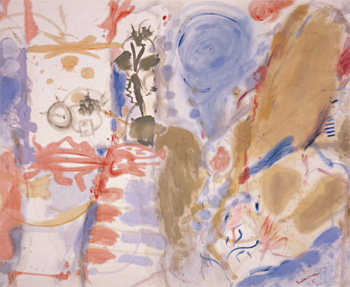Last night I heard wild cheering and honking horns in the streets of the Upper West Side of New York City. For my part I found myself thinking not so much of the immediate moment as of the increasingly distant past. I was born in 1956 and grew up in a small town whose public schools were segregated well into the Sixties. My father witnessed a lynching in the streets of that same town a quarter-century earlier, one whose perpetrators were never brought to trial.
A few weeks ago I finished writing the biography of Louis Armstrong, who even at the height of his fame continued to be treated by some Americans not as the culture-changing genius that he was but as a menial–an inferior, if you will. Barrett Deems, who played in Armstrong’s band in the Fifties, spoke years later of one terrible episode that had burned itself into his memory:
The [road] manager and I were the only two white guys in the organization, and here’s Louis with five or ten grand in his pocket, his wife with a twenty thousand dollar mink coat, and they both had to sleep in a gymnasium in North Carolina because they couldn’t find any accommodations. That was a killer. It takes the heart out of a man.
Henry James said it: we shall never be again as we were.

 I commend your attention to “Frankenthaler at 80: Six Decades,” which goes up at
I commend your attention to “Frankenthaler at 80: Six Decades,” which goes up at  It happens that Helen Frankenthaler is my favorite living painter, and the passage quoted above goes a long way toward explaining why, though I’d add one thing: she is one of the most enjoyable of the great American modernists, a painter who is unafraid to give pleasure and secure in the knowledge that to do so is a legitimate goal of modern art. Her work has been giving me intense and lasting pleasure ever since I started looking at paintings, and I’d surely write about this gorgeous show in The Wall Street Journal were I not the fortunate owner of one of her prints, “Grey Fireworks,” which hangs over the couch in my Upper West Side living room and of which Mrs. T and I are sinfully proud.
It happens that Helen Frankenthaler is my favorite living painter, and the passage quoted above goes a long way toward explaining why, though I’d add one thing: she is one of the most enjoyable of the great American modernists, a painter who is unafraid to give pleasure and secure in the knowledge that to do so is a legitimate goal of modern art. Her work has been giving me intense and lasting pleasure ever since I started looking at paintings, and I’d surely write about this gorgeous show in The Wall Street Journal were I not the fortunate owner of one of her prints, “Grey Fireworks,” which hangs over the couch in my Upper West Side living room and of which Mrs. T and I are sinfully proud. I ran across
I ran across